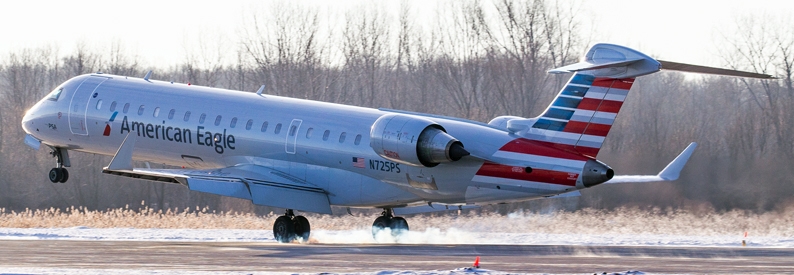New Regional Airline Association data shows 76% of US airports have lost air service

The Regional Airline Association (RAA), which represents the airlines that provide 43% of scheduled passenger flights in the U.S. and offer the only source of scheduled air service to most of the country, announced today the ongoing, severe pilot shortage has led to diminished or lost air service at 76% of U.S. airports, according to OAG published schedule data for October 2022 compared to the same 2019 period.
“We now have more than 500 regional aircraft parked without pilots to fly them and an associated air service retraction at 324 communities,” said Faye Malarkey Black, RAA CEO. “14 airports have lost all scheduled commercial air service – a number that is still rising.”
The ongoing pilot shortage previously led to contraction of the regional airline industry over a decade, with a corresponding reduction in air service to small and medium-sized communities. The total number of airports with service declined by 5% between 2009 and today. Those airports retaining air service saw diminished frequency with fewer destinations. These trends are accelerating; between 2019 and 2022, 161 U.S. airports lost more than one in four of their commercial flights. See the new aviation data compiled by RAA here.
FAA has certificated an average of 6,335 airline-qualified pilots each year since 2013, while the U.S. Bureau of Labor and Statistics (BLS) predicts 18,100 yearly commercial airline pilot openings over the next decade. A higher-than-usual number of pilots qualified in 2022 due to resumption of covid-disrupted qualifications, yet the industry is still short more than 8000 pilots. Hundreds more aircraft will be parked without resolution, leading to another wave of devastating air service loss.
“We are on the precipice of a wholesale collapse of small community air service,” noted Black. “It has already begun, with 60 U.S. airports losing more than half their air service since 2019. Every policymaker in the Administration and Congress must set aside politics and address this crisis today.”
Airline industry officials have been implementing measures to support future pilots, but a lack of training access blocks the career for many – particularly those without wealth. RAA offers several solutions to make pilot careers more equitable, like improved student loans for flight education and urges the FAA to make data-driven decisions on additional, advanced training pathways allowed under current law.
“The bottom line is that more structured training leads to better pilots, and RAA and its member airlines only want solutions that lead to safer pilots,” she noted.
Black additionally urged policymakers to take a multimodal approach to transportation safety. “Without reliable air service, displaced airline passengers become highway drivers, where the traffic fatality rate is soaring.”
The National Highway Traffic Safety Agency projects that an estimated 42,915 people died in motor vehicle traffic crashes in 2021, a 16-year high.
See the new aviation data compiled by RAA here.
About RAA – The Regional Airline Association (RAA) provides a unified voice of advocacy for North American regional airlines aimed at promoting a safe, reliable and strong regional airline industry. RAA serves as an important support network connecting regional airlines and industry business partners. In the United States, regional airlines operate 43% of scheduled passenger flights and provide the only source of scheduled air service to 66% of the nation’s airports. Media contact: [email protected]
Regional airlines provide 75% or more of the air service in Alabama (81%), Alaska (87%), Arkansas (85%), Iowa (81%), Kansas (80%), Kentucky (76%), Maine (87%), Mississippi (94%), Montana (79%), North Dakota (87%), South Dakota (86%), Vermont (92%) and West Virginia (92%).
Regional airlines provide half or more of the air service in Idaho (74%), Illinois (54%), Indiana (59%), Michigan (60%), Minnesota (51%), Nebraska (65%), New Hampshire (73%), New Mexico (59%), North Carolina (56%), Ohio (56%), Oklahoma (55%), Oregon (62%), Pennsylvania (58%), Puerto Rico (71%), South Carolina (61%), Virginia (57%), Wisconsin (67%) and Wyoming (68%).
